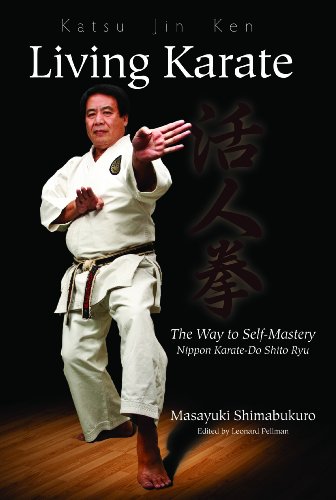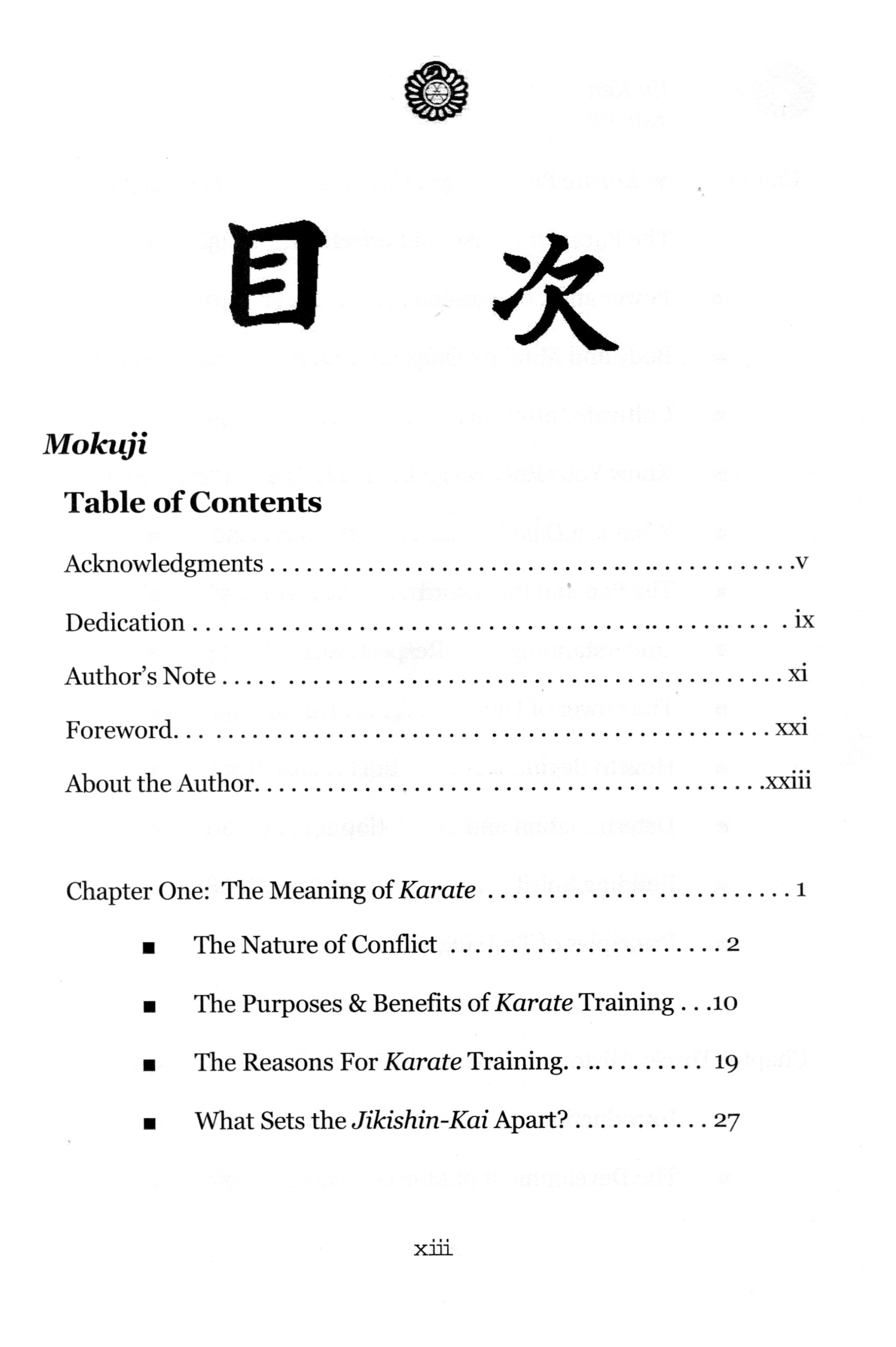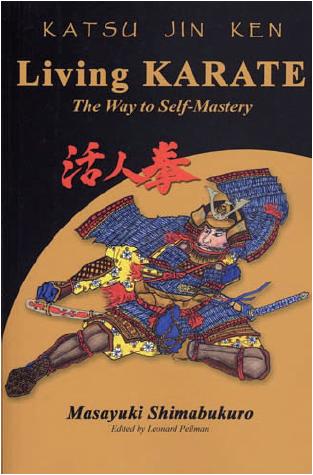A New Look
 A
year or two after the initial publication of
Katsujinken, Hanshi added a dust jacket with a photo of
himself (shown at left) performing kakete uke ("grasping
block"), which he felt better depicted the concept of
karate-dō than the painting of an armed
and armoured samurai used
on the original cover of the book. The original
cover design was
probably prompted in part by conversations he had
had with Mabuni Kenzō, son of Shitō-Ryū
founder,
Mabuni Kenwa, who insisted that Shitō-Ryū
should be
considered as a samurai art, because its techniques and
tactics were based to such a great extent on defending
against samurai attacking with yari (spears) or
katana
(swords and daggers). However, most karateka,
and especially those who might be purchasing
Katsujinken
as their first book on
karate-dō, would not readily
associate the armed samurai on the original
cover with karate, but they would
immediately recognise Hanshi's pose on the dust
jacket as a karate technique.
Additionally, the dust jacket clearly identifies the
primary author of the book.
A
year or two after the initial publication of
Katsujinken, Hanshi added a dust jacket with a photo of
himself (shown at left) performing kakete uke ("grasping
block"), which he felt better depicted the concept of
karate-dō than the painting of an armed
and armoured samurai used
on the original cover of the book. The original
cover design was
probably prompted in part by conversations he had
had with Mabuni Kenzō, son of Shitō-Ryū
founder,
Mabuni Kenwa, who insisted that Shitō-Ryū
should be
considered as a samurai art, because its techniques and
tactics were based to such a great extent on defending
against samurai attacking with yari (spears) or
katana
(swords and daggers). However, most karateka,
and especially those who might be purchasing
Katsujinken
as their first book on
karate-dō, would not readily
associate the armed samurai on the original
cover with karate, but they would
immediately recognise Hanshi's pose on the dust
jacket as a karate technique.
Additionally, the dust jacket clearly identifies the
primary author of the book.
Although readers from around the world have consistently praised Katsujinken for its clear, detailed, and profound description of both the technical and philosophical aspects of karate-dō, Katsujinken was not as widely received outside the Shitō-Ryū community as Hanshi had hoped and expected. There are undoubtedly many reasons for this, not the least of which is that there are hundreds of books in print to choose from on karate-dō, but only a handful on iaijutsu. Another limiting factor is probably a preference for books specific to the buyer's chosen style of karate-dō (Shōtōkan, Wadō-Ryū, Gōjū-Ryū, taekwondo, etc.) over a generic book. And, being self-published, Katsujinken did not have the benefit of a publisher's well established marketing and distribution networks.
A Peek Inside ...
 Coming
Soon! We will soon add a few sample pages and/or
excerpts from Katsujinken here.
Coming
Soon! We will soon add a few sample pages and/or
excerpts from Katsujinken here.
More about the content of Katsujinken will be explained in this paragraph.
Where to Buy Katsujinken
 Online
Bookstores: Katsujinken is available from major online
bookstores, including:
Online
Bookstores: Katsujinken is available from major online
bookstores, including:
•
Amazon
Used Bookstores:
Copies of Katsujinken are often
available
from online used book sellers like:
•
Thriftbooks
•
Abe Books
Seishin-Kan Online Store: print editions autographed by co-author, Leonard J. Pellman can be purchased (when in stock) from our own online store.
In Person: print editions autographed by co-author, Leonard J. Pellman can also be purchased in person at any regularly scheduled class at Victory Dōjō or any of Pellman Shihan's seminars or public appearances.

